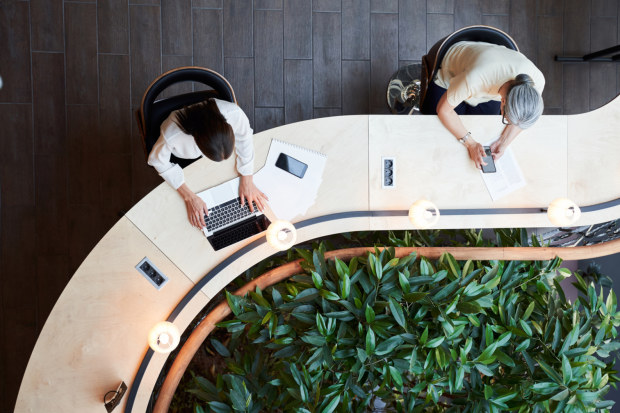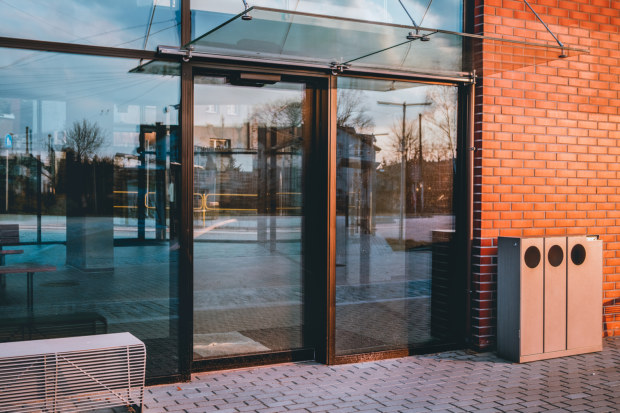Sponsored by Westpac
Commercial property sector enjoys post-COVID recovery
The commercial property market is highly active in both cities and regional areas, as the market responds to COVID trends such as hybrid working, shifts in demand for retail assets and strong investor appetite for industrial real estate. Scarcity of supply is helping to buoy the market.
Marty Green, National General Manager, Property Finance at Westpac Business, notes the pandemic has fundamentally changed the way CBD office space is used.

The pandemic has changed the way we use office spaces. iStock
“The push for open plan and agile working in recent decades increased office space efficiency as layouts moved away from individual offices to collaborative spaces. But social distancing has reversed some of those trends, as businesses try to ensure their employees can safely return to the workplace with ample social distancing on site.”
A corollary of this is a healthy appetite for office property. Research by commercial property managers Colliers shows $5.3 billion was invested in CBD offices in 2021, which represents a 40 per cent gain on 2020.
As the office market ramps up, corporates are working through how to adapt their existing office space to the new pandemic-led way of working. “With a mix of staff in the office and working from home, there may be opportunities for businesses to transition their approach to a more decentralised, flexible metropolitan footprint,” Green explains.
Beyond city borders
It’s not just city real estate that’s on an upward trajectory. Regional commercial property is enjoying a renaissance as people seek COVID-inspired tree and sea changes. Retail property has been a beneficiary.
“In the past year, we have seen major hubs such as Geelong experience strong commercial lending enquiry, fuelled by population growth, the shift to work from home, rising regional employment opportunities, housing affordability and proximity to Melbourne,” says Green.
Turning to retail more broadly, in recent years the sector has suffered a rise in vacancy rates and commensurate decline in rents in some of the larger retail centres. But it’s expected the market will recover as pandemic restrictions continue to ease and investors recognise opportunities to profit from retail and hospitality real estate.
“Over the past 18 months, many of our customers have acquired assets at tangible discounts, due to the level of uncertainty that prevailed earlier in the pandemic. More recently, this has led to significant growth in asset values within neighbourhood and large format retail sectors. Our retail portfolio has grown in the past year and many of the centres acquired are regional and tend to have a repositioning opportunity which our customers are not frightened to take on,” Green says.
Although it may seem counterintuitive given widespread stay-at-home orders, Lachlan MacGillivray, managing director of retail capital markets, Asia Pacific, Colliers, notes the pandemic has had a broadly positive impact on retail investment activity.
“While industrial and office assets have seen further cap rate compression throughout this period, this has not been the case for larger retail centres, driven mainly by COVID-impacted provisioning. With the strong retail sales performance witnessed over the last 12 months, we have seen retail become even more attractive on the relative value front. Retail owners and investors have been able to capitalise on the challenges of the last two years and ensure their assets are well-positioned for future success.”

Retail space is an attractive asset. iStock
Industrial assets the new black
The shift to online shopping is supporting demand for industrial and logistics real estate, with record increases in leasing floor space in 2021, according to Westpac’s figures.
Demand is being driven by major global funds, local listed and unlisted funds and private developers. “Very few new entrants are coming into the sector; it’s all about owners who were already in the market before the pandemic expanding their portfolios,” says Green
Gavin Bishop, managing director, industrial, Colliers notes the phenomenal growth the Australian industrial and logistics sector has recorded over the past two years has been supported by macroeconomic tailwinds that have underpinned both occupier and investment demand.
“COVID led to a sharp rise in online retail sales as consumers were forced to shop online and in turn, occupier take-up has reached record levels over the past two years. Despite record investment of $16 billion in the sector last year, demand continues to far outstrip the availability of assets for sale, which has placed downward pressure on yields.”
As the economy shifts to a new, post-pandemic operating normal it’s clear that investment and confidence, broadly in the sector, remains high. The weight of capital looking across all sectors isn’t wavering, creating more interest in secondary and regional markets. Plus, the impact of expected rate increases is seemingly offset by the expectation of a robust economic landing and corporate investment, which will see a pathway to increasing occupancy demand over the coming years.
Ultimately, on balance, the future seems positive for continued activity in the sector.
Whether you’re looking to grow, transform or scale up your business, Westpac is here to help make your plans happen. Chat to our specialist business bankers today to find the right solution for your business or find out how we can help at westpac.com.au/businessloanoffer
Sponsored by Westpac
Subscribe to gift this article
Gift 5 articles to anyone you choose each month when you subscribe.
Subscribe nowAlready a subscriber?
Introducing your Newsfeed
Follow the topics, people and companies that matter to you.
Find out moreRead More
Latest In Commercial
Fetching latest articles